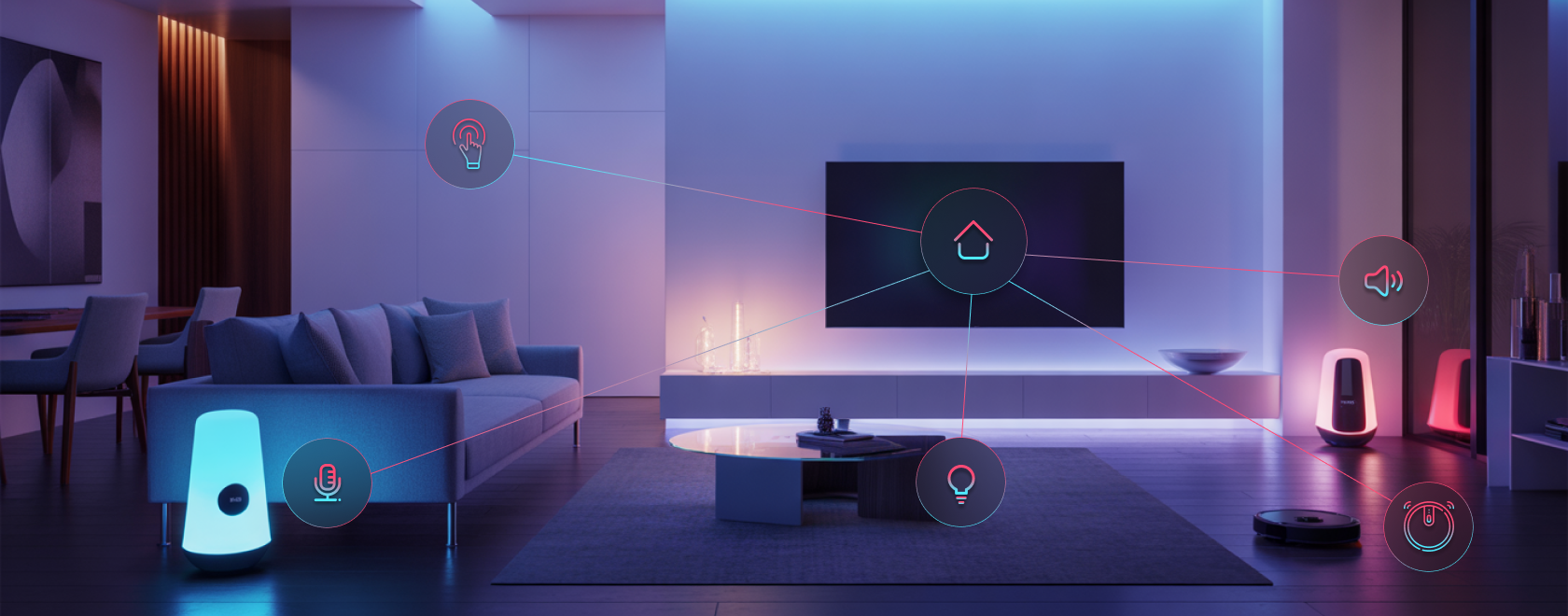Modern users are increasingly merging digital services into unified smart home ecosystems. Where IPTV once operated as a standalone feature, it can now be seamlessly integrated into your connected environment — offering the same convenience as controlling lights or other IoT devices. This is especially helpful when you want to minimize the number of remotes and apps, replacing them with voice control or automation, creating a truly comfortable multimedia hub.
Imagine launching your favorite channel with a voice command, having the TV turn on automatically at a set time, or making it part of your evening routine — all possible with proper Smart home IPTV integration.
Voice Control: No Buttons, No Hassle
One of the most intuitive and powerful ways to integrate IPTV into your smart setup is through voice assistant entertainment control. Media players running on Android TV or Google TV support Google Assistant, meaning you can say: “Okay Google, turn on sports”, and your IPTV box will tune to the right channel.
This setup is incredibly useful when your hands are full, you’re relaxing on the couch, or helping an elderly relative who might struggle with menus or remembering button sequences. The key requirement is that all devices are connected to the same network and recognized as part of your smart ecosystem.
Automation and Routines: How It Works
Smart home scenarios with TV are like digital routines or command chains triggered at specific times or by specific actions. IPTV can easily become part of these scripts to automate TV viewing routines based on time of day, user behavior, or environmental conditions.
For instance, you could create a morning routine that turns on the TV to the news, switches on the lights, and raises the blinds. Or set up a movie night scene where the lights dim, your VoD app launches, and the speakers activate.
These automation scripts simplify everyday tasks and make IPTV a natural part of your home comfort system. Most setups require no advanced technical skills — just the right tools and a bit of initial configuration.
Device Compatibility: What to Look For
It’s important to understand that not every IPTV device works out-of-the-box with smart home systems. The most seamless integration is offered by set-top boxes and TVs running Android TV or Google TV. Devices like Google Chromecast, Xiaomi Mi Box, and Nvidia Shield fall into this category, as they already support voice control for TV channels and networked operation.
If your device doesn’t support smart home protocols directly, there’s still a workaround. You can use infrared controllers to emulate remote control signals. While less flexible, this method handles basic functions like power, volume, and channel switching effectively.
What to Prepare Before Integration
Before bringing IPTV into your smart home setup, make sure three things are in place:
1. The IPTV player must be connected to a stable internet connection — preferably via Ethernet or reliable Wi-Fi.
2. The IPTV service should support automatic app or channel launch.
3. Your smart home controller should recognize the device as part of the ecosystem.
If these conditions are met, IPTV becomes not just a content source, but a functional piece of your home automation system.
Starter Scenarios You Can Set Up Right Away
To begin experiencing the benefits of home automation with IPTV, consider setting up the following:
- Morning mode: Automatically turns on the TV to the news when you wake up.
- Movie night: Launches your VoD app, dims the lights, and activates the sound system with a single voice command.
- Parental control: Shuts off IPTV at a specific time or activates a safe content mode.
- Sleep timer: Turns the IPTV device off one hour after activation.
- Leaving home: Shuts down all media devices when you exit the house.
Integrating IPTV into your smart home isn’t just a tech gimmick — it’s a practical step toward simplifying daily routines. Through smart speakers, routines, and seamless integration, your TV becomes more than a screen — it becomes an active part of your IoT media control system, adapting to your lifestyle.
The best part? You don’t need to buy extra hardware. Most homes already have the devices required for this setup — it just takes a bit of configuration to unlock their full potential.
